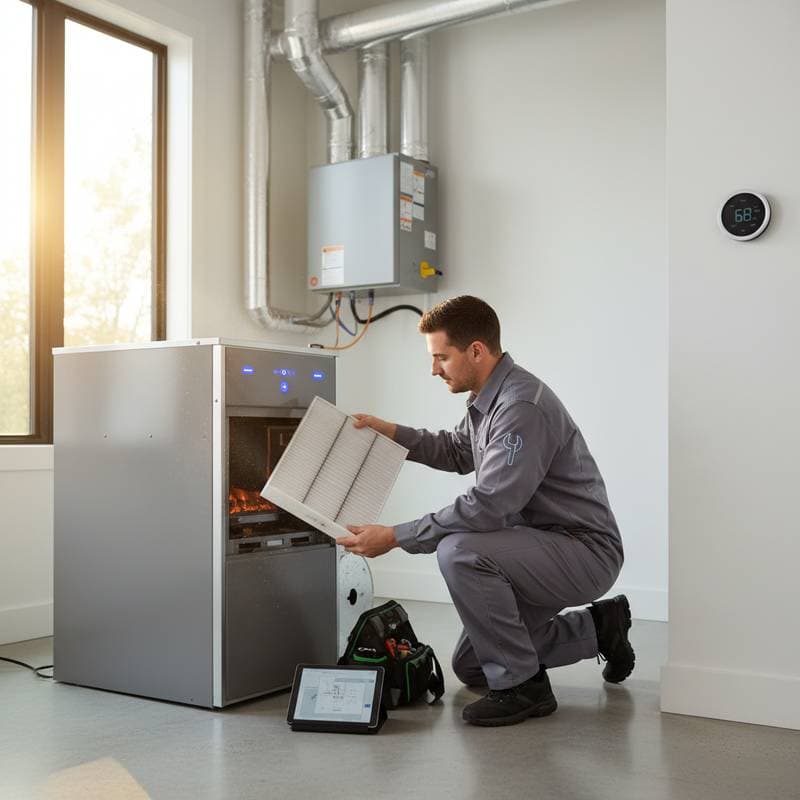2025 Chimney Inspection: What to Expect and Actual Costs
A chimney inspection ranks among the most neglected aspects of home maintenance, yet it directly impacts safety, efficiency, and property value over time. Homeowners often delay action until smoke fills the living room or drafts disrupt comfort, but proactive checks prevent these problems, lower fire risks, and prolong fireplace system life. With heating seasons approaching, grasp the inspection process and pricing to streamline your planning and achieve better value.
Essential Reasons for Chimney Inspections
Fireplaces deliver cozy warmth, but neglected chimneys pose serious risks. Creosote accumulation, flue liner cracks, or debris blockages can cause smoke infiltration or spark residential fires. The Chimney Safety Institute of America documents thousands of such incidents annually in uninspected chimneys.
Inspections evaluate structural soundness, airflow, and regulatory adherence. Even infrequent fireplace users face threats from moisture infiltration or animal nests within the flue. Annual evaluations detect concealed problems early, averting expenses that escalate into thousands for repairs.
Three Standard Inspection Levels Explained
Certified professionals adhere to a tiered inspection framework that determines service scope and detail. Select the appropriate level based on your fireplace usage and home history to optimize budgeting and timing.
Level 1 Inspection:
This entry-level visual assessment covers accessible components like the firebox, damper, and exposed flue areas. Opt for this if you use the fireplace often without noticeable issues; it serves as the standard annual review for typical homes.
Level 2 Inspection:
Pursue this thorough evaluation after modifications such as appliance upgrades, fuel switches, or real estate transactions. It encompasses Level 1 elements plus video scoping of the flue to reveal internal fractures, obstructions, or wear invisible to the naked eye. Schedule it following chimney fires or extreme weather exposure.
Level 3 Inspection:
Reserve this extensive review for suspected major damage, which may require limited disassembly of walls or chimney elements. Technicians fully examine hidden structures to recommend repairs. Few homeowners encounter this level unless evident problems already exist.
Step-by-Step Process of a Professional Inspection
Inspectors start with an exterior and interior safety scan, examining the chimney cap, crown, flashing, and brickwork for deterioration or water damage. They then scrutinize the damper, smoke chamber, and flue for residue and barriers. Advanced tools like cameras detect fissures that might permit smoke or carbon monoxide entry into living spaces.
Many providers deliver digital summaries featuring images and targeted repair advice. Additional diagnostics, such as moisture detection or thermal scans, uncover concealed leaks or insulation breakdowns near the chimney. Expect the visit to last one to two hours, influenced by system scale and access ease.
Realistic Pricing for Chimney Inspections
Inspection fees depend on geographic area, fireplace variety, and service depth. A Level 1 evaluation generally costs between $100 and $350. Level 2 services, incorporating camera use and detailed documentation, range from $250 to $600. Level 3 assessments, potentially involving disassembly, exceed $1,000 in many cases.
Key pricing influencers include:
- Access Challenges: Tall structures or sloped roofs extend labor and fees.
- System State: Heavy creosote or existing harm demands extended analysis.
- Regional Differences: City-based services reflect elevated wages compared to countryside options.
- Supplementary Options: Sweeping, sealing, or small fixes add costs but mitigate long-term issues.
Homeowner experiences shared on improvement forums indicate that bundled inspection-cleaning services average $300, providing economical preparation for colder months.
Weighing DIY Against Expert Evaluations
Certain homeowners attempt self-inspections with basic tools like flashlights and mirrors. These methods spot obvious exterior flaws but overlook vital internal defects. Limit DIY efforts to initial observations of bricks or cracks, then rely on specialists for comprehensive threat identification.
Experts possess certifications from bodies like the Chimney Safety Institute of America or National Fireplace Institute, along with insurance protection. Such credentials safeguard against service-related mishaps and satisfy insurer demands post-incident or during sales.
Preparation Steps for Your Inspection Day
Clear the hearth of logs, residue, or ornaments prior to arrival. Maintain a five-foot clearance around the fireplace for unobstructed work. Refrain from fireplace operation for 24 hours beforehand to ensure a cooled interior.
Survey nearby indoor and outdoor zones for apparent fissures or moisture marks, then relay findings to the inspector. Retrieve past inspection documents for reference; tracking evolutions in condition supports informed decisions.
Urgent Indicators Requiring Prompt Inspection
Certain symptoms demand immediate professional attention, even outside routine schedules:
- Smoke spilling into the room during operation.
- Persistent scents of burning or mildew.
- Black residue marks on adjacent surfaces.
- Deteriorated or absent exterior mortar.
- Reduced draft or heating performance.
Address these swiftly to prevent hazards like toxic gas seepage or flue instability.
Selecting Trustworthy Inspection Services
Prioritize providers with verifiable credentials, proven track records, and upfront communication. Seek firms offering detailed quotes, coverage verification, and explicit protocols. Request photo-inclusive digital reports to aid in claims or future work.
Gather recommendations from neighbors or vetted online sources. Verify participation in ongoing training to confirm adherence to current codes and techniques.
Safeguarding Your Home Through Consistent Care
Beyond fire prevention, regular inspections enhance indoor air purity, uphold building stability, and boost heating performance. A maintained chimney optimizes fuel use and blocks moisture or infestation damage.
Schedule annual professional reviews before fall arrives; heavy users benefit from interim assessments. Archive all reports and fixes to bolster resale appeal and prove diligent upkeep. This strategy minimizes expenses while securing reliable, worry-free fireplace enjoyment.





